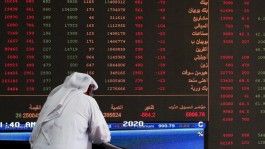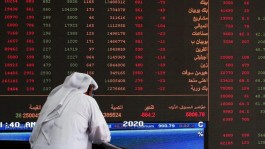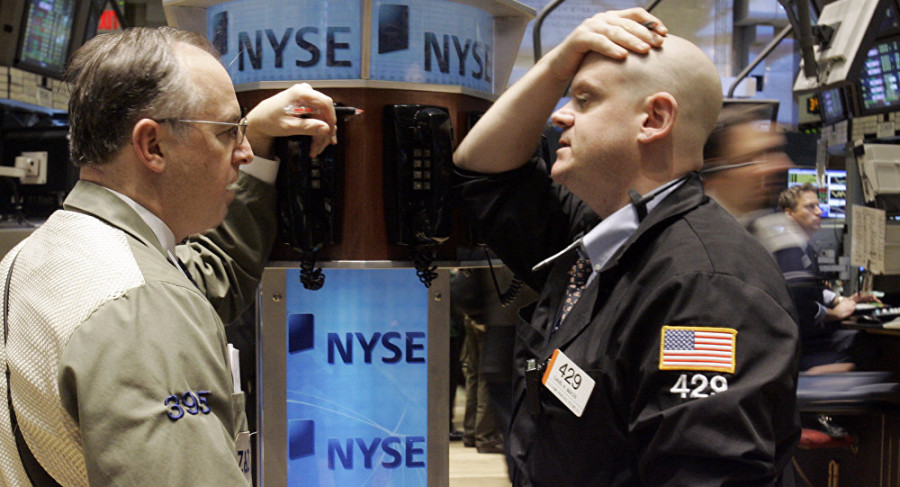1. In the summer of 1971, and specifically on August 15, US President Richard Nixon took several very hot economic decisions, the most important of which was the temporary suspension of the gold standard binding to accept direct international transfers from the US dollar to gold.
The decision, known as the Nixon shock, came in the light of three major factors:
First ... to mitigate the effects of the heavy losses suffered by the US federal budget due to the Vietnam War
Second, the return of good growth in Asia led by the Japanese economy and in Europe led by the West German economy at the time
Thirdly, the demands of some countries of the world for gold in return for the acquisition of the US dollar according to the Bretton Woods Agreement, to which the United States joined again after the end of the Second World War after its withdrawal in 1933
The previous scene pushed US indexes to a record high rally for almost two years of the Nixon shock of the October 6 1973 war. The world then realized that the decision to suspend the gold standard was not temporary, as Nixon claimed, but rather a declaration of a new global financial order US dollar all global business transactions ...
3. The 1980s underscored the success of US economic control over the world and the declaration of the death of the Bretton Woods agreement by liberalizing the price of gold from $ 35 an ounce to the $ 100 level ... as well as the invention of the oil futures contract and pricing in US dollars ... Since then, the world is witnessing a financial crisis in the last third of every ten years that rearranges the economic balance of power in favor of the United States of America.
4. The world faced three major financial crises with its aftermath from the Black Monday on October 19, 1987 to the earthquake of East Asian markets in July 1997 and the collapse of the Russian ruble in 1998 to the global financial crisis in 2008, where the world economy lost more than 45% of its value. ..
These crises were declared champions of the monetary policy conflict between the central banks of the world on the one hand and the American federal on the other, while the hidden hero is the reactions of the global policy under the slogan All roads lead to the United States of America ...
5. Since the beginning of 2016, geopolitical data has been on the horizon since the collapse of oil prices to $ 26 a barrel in January ... the referendum on Britain's separation from the European Union in June ... and Donald Trump won the US elections in November of the same year. ..
Those three circles took on the positive track only the bustling Trump Circle, which took a very nervous course ... Oil added gains of around 300% of its lowest price in 2016 after the efforts of global supply-reduction agreements ... The Brexit measures no longer affect The markets will go on to March 2019 to start a flexible separation of Britain from the European Union ... Trump, the champion of the whole scene, is still issuing exciting decisions for everyone to hit the main disadvantage of China, which is a real challenge to the US economy through the huge trade deficit between the two countries. And about 300 billion dollars for the Chinese dragon. ..
6. Vietnam's historical lesson seems to push every US administration to work away from the military solution in Asia. It is confined to skirmishes that escalate into inflammatory media wars, as happened with North Korea, but often do not reach direct confrontation on the ground. What is now clear after the opening of negotiations and peace talks between Korea Kim and America Trump ...
Therefore, the complexities of the complex economic weapon that fits Asia and Trump are well known. The US accusations that China is the biggest thief of intellectual property rights and the largest manipulator of currencies against the dollar and the most overwhelming of millions of US jobs ... put whatever accusations you have on China's side To get Trump's decisions to impose tariffs on steel and aluminum imports and a long list of bipolar goods ranging from 10 percent to 50 percent ... which China, the European Union, Canada and Mexico met with similar tariffs on imports America ... and the promise of economic measures Mutual retaliation escalates the scene from a crisis situation to a state of commercial war ...
7. The Middle East theater, of course, has not lost sight of these flaming events. The US withdrawal from the Iranian nuclear deal imposes a 90- to 180-day time commitment on European and Chinese companies to withdraw from Iranian markets. Most of these companies will face US sanctions by the end of 2018, Doubling with the activation of tariff increases on imports coming to the United States
8 - Add to all the above chronic problems in European banks, especially Greece, Spain and Italy, which is experiencing a significant economic decline ... And the inflationary waves witnessed by the economies of the third world and concealment of the gamma can be explosive at any time ...
And the worrisome file, where the insane growth of the world debt level, which exceeded in 2016 about 164 trillion dollars, which is equivalent to 225% of the total world output ... and about 12% more than the total world debt when the crisis occurred in 2008. According to the International Monetary Fund (IMF), which has largely blamed China for its poor and government debts.
Not forgetting the surge in new financial instruments seen in the digital currency market, which in the course of 2017 acquired nearly $ 850 billion and represents a different challenge to traditional financial transactions may establish a new financial system announces the end of the system ...
Finally, after reviewing the interaction of the previous data, the size of the enormous pressures faced by the world economy, especially with the rough and rough treatment by the Trump administration with the files of the economy is not separated from the economy, warns with time and accumulation of solutions approaching a new global financial crisis By the nervous movements of the indicators of the markets ... and has not lagged since the eighties with the end of each decade ...
Are we ready for that?








































